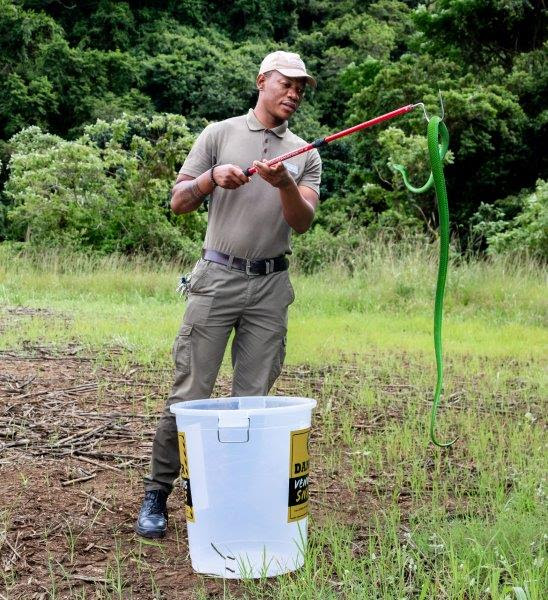23 April 2025
The announcement that snakebite anti-venom was in short supply in South Africa prompted Crocworld Conservation Centre in Scottburgh to temporarily suspend snake removal call-outs to ensure the safety of its team. While the situation is being reassessed following the announcement that anti-venom is being sourced from India, Crocworld has shared some valuable tips to keep the community – and snakes – safe.
“After it was announced that anti-venom was in short supply, we were inundated with queries from the public, and felt it best to share important tips regarding what to do when encountering snakes,” noted Susan Badat, Manager at Crocworld Conservation Centre. “Snake activity will be slowing as the cooler weather arrives, but in an area like the KZN South Coast, which is home to a variety of incredible snakes, it’s best to know what to do to stay safe.”
The Previous Anti-Venom Shortage Explained
South African Vaccine Producers (SAVP), responsible for local production, were unable to supply anti-venom to South African hospitals for a period. To bridge the gap, an alternative, Pan African Premium Anti-Venom (Panaf), is being imported under Section 21 from India, but it can require a higher dosage, impacting the cost. This does, however, mean that there is no antivenom shortage currently, as Panaf is now approved for State hospitals, is stocked at private hospitals, and is available for vet purchase.
Snake Venom Types
There are 3 main types of snake venom that occur, affecting different areas and determining the antivenom required. The polyvalent antivenom is effective for the treatment of neurotoxins and cytotoxins. The monovalent is used for Boomslang bites. The venom types are:
1. Cytotoxic
This affects the tissue with pain and swelling almost immediately after the bite, worsening over the next few hours. It’s often described as feeling like ‘cold fire’ with shock developing later. It can be fatal – but rarely is.
Snake Types: Puff Adder, Mozambique Spitting Cobra
2. Neurotoxic
Neurotoxic venom disrupts nerve function, leading to paralysis, muscle weakness, and potentially respiratory failure, and can also cause other neurological complications depending on the venom and the animal.
Snake Types: Largely the Mambas and some Cobras (excluding the Spitting cobras)
3. Haemotoxic
This type of venom is slow with effects seen after an hour but can take a few days to manifest. The venom causes irregularities in the victim’s blood, preventing it from clotting. A bleeding tendency occurs starting with blood oozing from the fang punctures, nose bleeds, all the mucous membranes and progresses to other organs, bruises, blood is found in the urine and vomiting of blood. Anaemia and shock may develop and eventually kidney failure may set in.
Snake Types: Boomslang and the Vine Snake
Crocworld’s Snake Safety Guidelines
With snake activity still underway, Crocworld encourages residents on the KZN South Coast to take safety precautions when encountering snakes. The team has compiled a list of guidelines, drawing on information shared by Snake Bite Assist, the African Snakebite Institute, and Flipper Layman: Snakebite Flipper Card.
Do’s and Don’ts in the Case of a Snakebite
If bitten by a snake, it is vital to act swiftly and calmly, as every second counts.
DO’S
DON’TS
“The only treatment for serious snakebite envenomation is anti-venom administered in a hospital setting under strict medical supervision. Attempting to treat a snakebite yourself can be fatal,” added Badat.
Emergency Hospitals on the KZN South Coast
In the event of a snakebite emergency, proceed immediately to one of these facilities:
Emergency Numbers:
Badat says that, although Crocworld is not currently undertaking snake removals due to the heightened risk to its team, the centre continues to advocate for the safety of both people and snakes: “By sharing knowledge and fostering respect for wildlife, Crocworld aims to reduce unnecessary encounters and promote coexistence with indigenous wildlife.”
